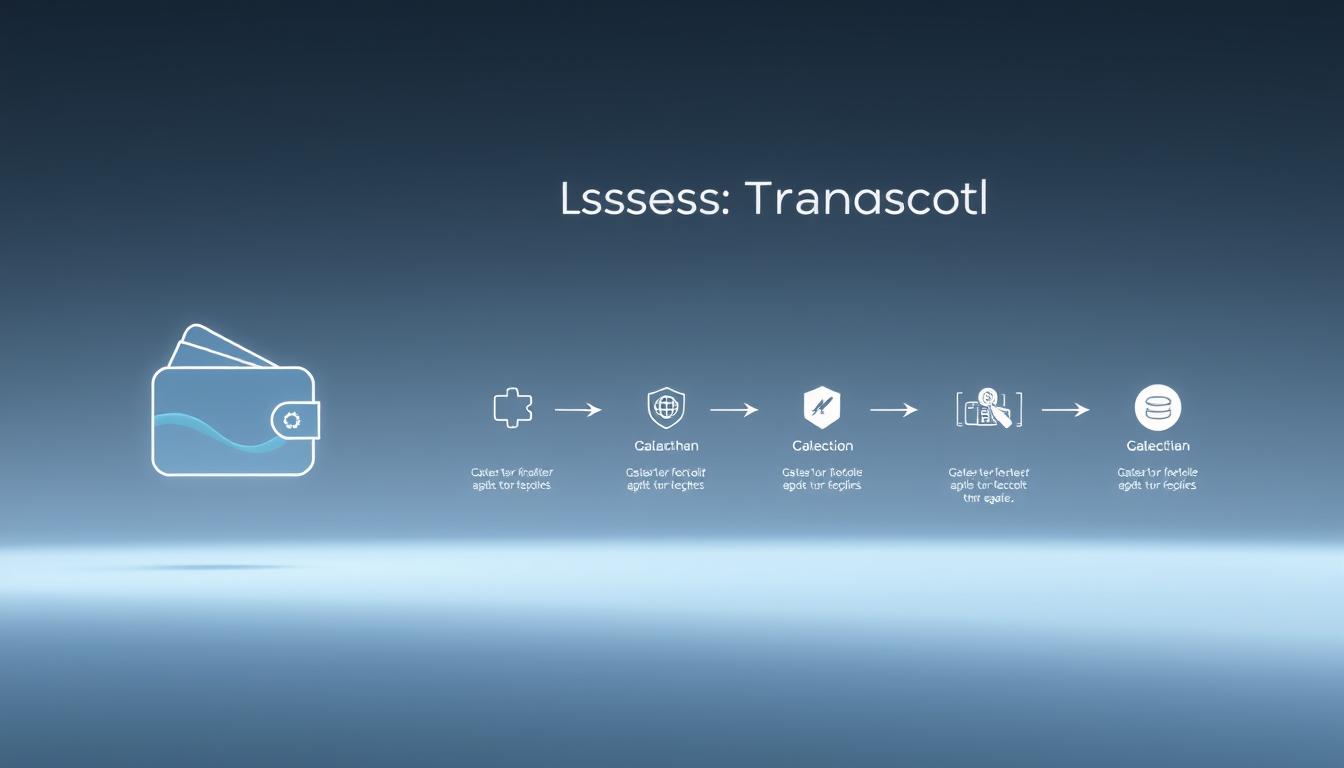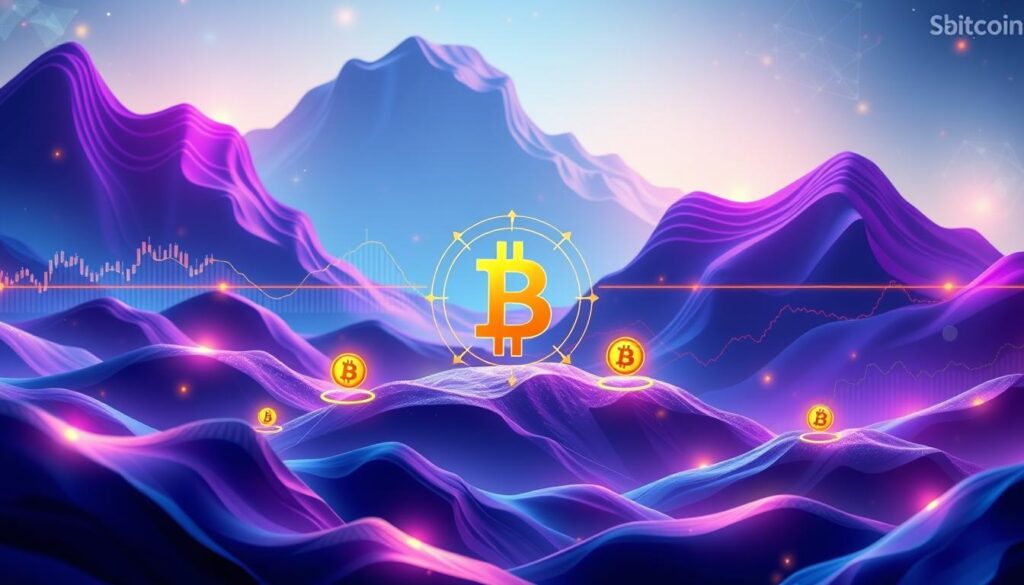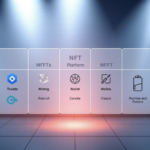Now Reading: Mastering Gasless Transactions: A Step-by-Step Tutorial
- 01
Mastering Gasless Transactions: A Step-by-Step Tutorial
Mastering Gasless Transactions: A Step-by-Step Tutorial
Blockchain technology has revolutionized digital interactions, but one hurdle remains: gas fees. Traditional networks require users to pay these costs directly, creating barriers for newcomers. Imagine accessing decentralized apps (dApps) without worrying about cryptocurrency balances or complex fee calculations. That’s where gasless transactions shine.

This approach lets users interact with smart contracts while a third party—like a relayer or paymaster—covers the network costs. Think of it as a sponsor handling the technical details so you can focus on the experience. For developers, this means creating apps that feel familiar to web2 users while maintaining blockchain’s security.
Why does this matter? Over 40% of potential users avoid dApps due to gas fee complexity, according to recent surveys. By removing this friction, projects can attract mainstream audiences who value simplicity. Platforms like OpenZeppelin offer tools to implement this seamlessly, making adoption faster than ever.
Key Takeaways
- Third parties cover network fees, eliminating upfront costs for users
- Simplifies blockchain interactions for non-technical audiences
- Accelerates adoption by mirroring traditional app experiences
- Maintains security while reducing onboarding friction
- Practical implementation steps covered in later sections
Introduction to Gasless Transactions and the Blockchain Ecosystem
Every action on a blockchain requires fuel to execute. This fuel, called gas, powers operations like transferring tokens or running smart contracts. Without it, networks like Ethereum couldn’t function – but managing these costs often confuses newcomers.
What Are Gas Fees and Their Role in Blockchain Operations
Gas fees act as both a reward system and security measure. Validators earn them for confirming actions on the network. They also prevent spam by making malicious activities expensive. When demand spikes, prices rise – like surge pricing during rush hour.
For example, minting an NFT might cost $5 one day and $50 the next. This volatility creates uncertainty for app developers and users alike. It’s why many projects seek alternatives to traditional payment models.
Shifting Gas Costs: From Users to Relayers and Paymasters
New systems let third parties handle fee payments instead of end users. These sponsors – called relayers or paymasters – cover network costs upfront. Apps then repay them later through subscriptions or service charges.
This model mirrors how streaming services bundle data costs into monthly plans. Users enjoy seamless interactions, while businesses absorb operational expenses. The blockchain still collects its fees – just from different sources.
Exploring Gasless Transactions: Concepts, Benefits, and Use Cases
Decentralized applications are rewriting the rules of digital engagement by eliminating one critical barrier: upfront network costs. This innovation lets people interact with blockchain tools as effortlessly as they use mainstream apps.

Defining Gasless Transactions in Modern dApps
Fee-free systems split responsibilities between two wallets. The User Wallet holds assets like NFTs or tokens, while the Payer Wallet covers network fees automatically. Popular networks enabling this include:
- Polygon (MATIC)
- Avalanche
- Binance Smart Chain
- Arbitrum
Developers implement this using EIP712 standards. Users sign requests off-chain, which payers then broadcast. This method only works with custom smart contracts – native token transfers still require traditional fees.
Real-World Examples and the User Experience Advantage
Leading platforms use sponsored fees to simplify onboarding. Consider these scenarios:
- Gaming apps letting players trade items instantly
- NFT marketplaces offering one-click purchases
- DeFi platforms enabling swaps without token balances
These gasless solutions reduce abandonment rates by 60% in some cases. Newcomers can explore dApps without first buying cryptocurrency, mirroring the frictionless start of web2 services. However, developers must design contracts with specific functions like executeMetaTransaction to enable this feature.
Setting Up the Development Environment for Gasless Transactions
Building blockchain applications starts with the right toolkit. Developers need specialized tools to create systems where users don’t pay network fees directly. This setup combines local testing environments with libraries that handle fee delegation.

Installing Required Tools: Ganache, OpenZeppelin CLI, and GSN Helpers
Begin by creating a new npm project. Run these commands in your terminal:
mkdir gasless-project && cd gasless-project
npm init -yInstall essential packages with one command:
- Ganache CLI: Simulates a local blockchain network
- OpenZeppelin CLI: Manages contract deployment
- GSN Helpers: Emulates fee delegation during testing
npm install @openzeppelin/network @openzeppelin/gsn-helpers ganache-cliInitialize your project structure using:
npx oz initThis creates configuration files and a contracts folder. The setup ensures your application can interact with relayers while maintaining test network compatibility. Keep dependencies updated to avoid version conflicts during deployment.
Building and Deploying Your Gasless Smart Contract
Coding smart contracts with fee delegation requires precise architecture. Start with a basic Counter example to grasp core mechanics before scaling to complex systems.

Creating a Simple Counter Contract with GSN Support
Begin with a standard contract tracking numerical values. Here’s the foundation:
contract Counter {
uint256 public value;
function increase() public {
value += 1;
}
}Modify it for fee delegation by inheriting OpenZeppelin’s GSNRecipient:
- Add import “@openzeppelin/contracts/GSN/GSNRecipient.sol”;
- Change contract declaration to contract Counter is GSNRecipient
- Implement required methods: acceptRelayedCall determines transaction approval logic
Deploying Your Contract Using OpenZeppelin CLI
Run your local blockchain with Ganache before deployment. Use these commands sequentially:
npx oz create Counter --init initialize --args []
npx oz send-tx --method increaseThe initialize() function activates GSN compatibility. Test interactions through decentralized exchange interfaces to verify sponsorship works.
Key deployment checks:
- Confirm paymaster address in network configuration
- Validate relay hub connectivity
- Test multiple user wallets for fee coverage
Integrating Gasless Transactions into Your dApp
Creating accessible blockchain experiences starts with seamless integration. Modern dApps now empower users to interact directly through web interfaces, bypassing traditional crypto barriers. This approach removes account setup headaches while maintaining blockchain’s core benefits.
Bootstrapping a React Application with create-react-app
Begin by initializing your project using create-react-app. Run this command in your terminal:
npx create-react-app gasless-dappInstall OpenZeppelin Network JS for GSN integration. This library handles fee delegation behind the scenes:
npm install @openzeppelin/networkLink your compiled contract files to the application. Create a symbolic connection so React can access JSON artifacts:
cd src && ln -s ../../build/contracts contractsConfigure the web3 provider using the useWeb3Network hook. Set dev mode to true for testing environments:
const { provider } = useWeb3Network('http://localhost:8545', {
gsn: { dev: true }
});Users can now engage with your application immediately. The system auto-generates signing keys, eliminating these requirements:
- MetaMask browser extensions
- Pre-funded Ethereum accounts
- Native token balances
Handle errors gracefully by monitoring transaction states. Display clear feedback during processing to maintain user trust. Production deployments switch to standard GSN providers while retaining the same smooth interaction flow.
Mastering Meta Transactions and EIP712 Signatures
Digital interactions evolve when users bypass technical complexities. Meta transactions enable this shift by letting third parties execute blockchain actions securely on behalf of others. The EIP712 standard makes this possible through structured data signing – a game-changer for user-friendly dApps.
Understanding the Meta Transaction Flow and EIP712 Standard
EIP712 transforms how wallets display signing requests. Instead of raw hex data, users see:
- Human-readable contract details
- Clear method parameters
- Verified domain information
This structured approach prevents phishing by showing exact transaction context. For example, transferring an NFT requires these components:
Breaking Down Function Signatures and Input Data
Create function signatures using method IDs and encoded parameters. Let’s examine a token transfer:
function safeTransferFrom(address from, address to, uint256 tokenId)Its ABI-encoded signature becomes 0xf242432a. Combine this with padded addresses and token ID to form complete input data. Each element aligns with the EIP712 JSON schema:
- Domain: Contract name, version, and chain ID
- Types: Defined data structures
- Message: Nonce, sender address, and encoded function
Developers implement this using libraries like ethers.js, ensuring consistency across wallets. Always test signatures on testnets before mainnet deployment.
Security Considerations for Gasless dApps
Maintaining secure systems becomes critical when third parties handle network costs. Developers must balance accessibility with robust safeguards to protect users and sponsors.
Ensuring Trust with Relayers and Paymasters
Relayers act as transaction bridges, but malicious actors could alter data. Verify their reputation through:
- On-chain activity history
- Smart contract audits
- Community trust scores
Paymasters need strict sponsorship rules. Limit free actions to prevent abuse. Use gas price caps to block cost inflation attacks.
Safeguarding Transaction Integrity and Key Management
Sign messages off-chain using EIP712 standards. This ensures relayers can’t modify requests before submission. Always validate:
- Original sender addresses
- Transaction nonce sequences
- Contract interaction patterns
Store private keys in hardware wallets or secure enclaves. Never expose them in code. Implement multi-sig approvals for high-risk operations.
FAQ
How do gas fees affect blockchain usability?
Gas fees cover computational work on networks like Ethereum. High costs during congestion can deter users from interacting with dApps, especially for small transactions or new participants unfamiliar with crypto payments.
What tools are essential for developing gas-free applications?
Developers use Ganache for local testing, OpenZeppelin CLI for secure contract templates, and Gas Station Network (GSN) helpers to integrate relayers. These tools streamline building without requiring users to hold native tokens.
How do meta transactions improve user onboarding?
By allowing third-party relayers to pay fees, apps eliminate upfront token requirements. This simplifies onboarding for non-crypto audiences and reduces friction in Web3 games or social platforms.
Why is EIP712 critical for secure off-chain approvals?
The EIP712 standard creates human-readable signatures for meta transactions. It prevents phishing by displaying structured data (like function calls) users sign, ensuring transparency before relayer submission.
What risks arise when using relayers in dApps?
Untrusted relayers might censor transactions or manipulate data. Projects mitigate this by using audited services like OpenZeppelin Defender or decentralized networks that enforce fee fairness and execution accuracy.
Can existing smart contracts support gas-free interactions?
Yes. By wrapping functions with GSN-capable contracts or using proxy patterns, developers enable fee delegation without rewriting entire systems. Libraries like OpenZeppelin’s provide upgradeable templates for easy integration.
How does a paymaster enhance transaction flexibility?
Paymasters let dApps sponsor fees in ERC-20 tokens instead of ETH, or apply subscription models. Services like Biconomy offer customizable rules, letting projects absorb costs for specific users or actions.
What frontend frameworks work best for gas-free dApps?
React.js paired with ethers.js or web3.js is common. Tools like create-react-app speed up UI development, while wallets like MetaMask handle signature requests without exposing private keys.













